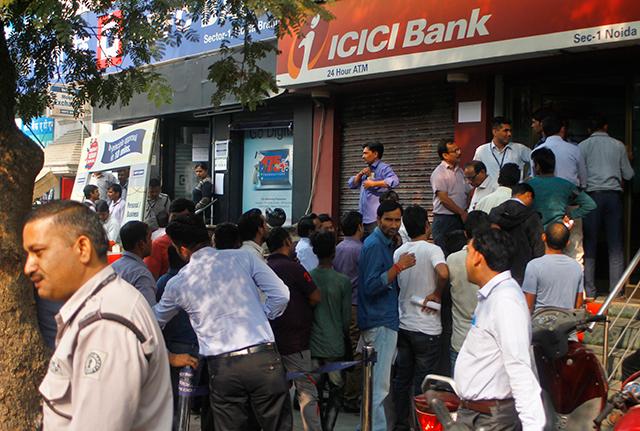It has been three weeks since Prime Minister Narendra Modi announced his decision to withdraw Rs 500 and Rs 1,000 currency notes. Ever since then, the country has seen long queues outside bank branches and ATMs, with people scurrying to deposit their old currency or have their old notes exchanged for new ones.
But one look at the news reports and the data available at hand, and it appears that the government may already be fighting a losing battle against black money or unaccounted wealth.
Rising bank deposits: Although publicly available data as of last week show that a little over Rs 5.4 lakh crore—or nearly a third of the value of the Rs 500 and Rs 1,000 banknotes under circulation—had been deposited, news reports say the figure has surged to around Rs 8 lakh crore. This, with well over a month to go before the deadline to have such money deposited with bank branches and post offices.
If true, this will mean that a significant portion of the Rs 14.5 lakh crore worth of the old currency that was in circulation, could find its way back into the system, against the government’s initial hope that Rs 4-5 lakh crore may never come back. Now, if most money does come back, it would either mean that most black money has either been successfully laundered or that it had already been converted into gold and real estate.
A problem of plenty: This surge in deposits could also be a problem of plenty for the banks, which will have to lower interest rates to deploy all this extra cash. In fact, on 26 November, the Reserve Bank of India asked banks to park all their incremental deposits between 16 September and 11 November with it, in a bid to absorb excess liquidity. The central bank, however, said that is was a temporary measure, which will be reviewed in December, around the same time it comes out with its bi-monthly credit policy, in which, it is widely expected to lower interest rates.
Not enough cash infusion: While the government sucked Rs 14.5 lakh crore out of the system, it has only put Rs 1.5 lakh crore back into it. A 25 November report released by Credit Suisse says that of this amount, a significant portion has been in the form of the new Rs 2,000 notes, which, people are finding hard to transact with, at least when it comes to minor day-to-day purchases. The problem of not enough cash being available could exacerbate around Wednesday as payday approaches. People are likely to throng banks and ATMs to withdraw money for their monthly expenses, adding to the queues.
Lower GDP growth: Demonetisation could have a negative short-term impact. In a 25 November report, Deutsche Bank said that India’s real GDP growth could slip to 6.5% during the current financial year, and will likely gradually recover to 7.5% by sometime next year. This comes even as India’s GDP numbers had already begun showing signs of losing steam, although the country remained the fastest-growing major world economy. Moreover, as a report in the Mint newspaper points out, earnings estimates of BSE-listed companies have already fallen 2.9% since the note ban was announced on 8
November. Rural economy grinds to a halt: India’s rural economy depends on a system of informal lending, where small-time money lenders provide unbanked farmers with much-needed credit at rates much higher than a bank would. Since such transactions happen entirely in cash, this important source of credit has been severely hit, with moneylenders struggling to extend and recover loans. This has also hit India’s microfinance sector, which is unable to recover dues.
Like this report? Sign up for our daily newsletter to get our top reports.






